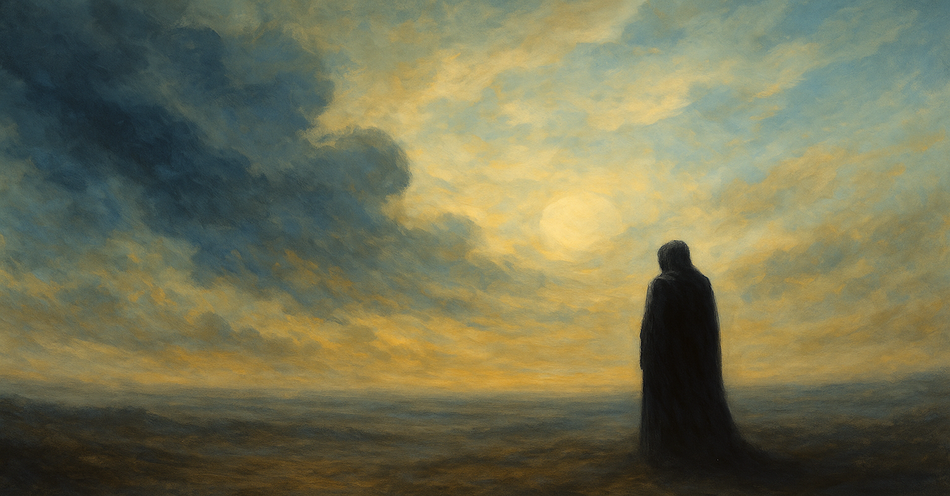Discussions about the end times often mention the mark of the beast, 666 (and occasionally jokes about 665.99, which is… the retail price of the beast). But occasionally someone will bring up the image of the beast, the name of a certain Christian film from the 1980s, and also a striking detail from the Book of Revelation.
Let’s explore what the image of the beast is and what we can learn from this reference that may help us spiritually grow today.
Does the Bible Say Anything about the Image of the Beast?
The Bible mentions the image of the beast and the mark of the beast in Revelation 13. The opening to the chapter describes a seven-headed beast (with 10 horns, each wearing a crown) which “resembled a leopard, but had feet like those of a bear and a mouth like that of a lion” and a “blasphemous name” across each head (Revelation 13:1-2). One of the heads on the beast has a “fatal wound” which is later healed (Revelation 13:3). Frequently in end times theology, this beast rising out of the sea is called the Antichrist.
The beast rises out of the sea and is given authority from a dragon (Satan) to control the planet for 42 months. During this period, another beast (identified in Revelation 19 as the False Prophet) rises from the earth and convinces people to follow the Antichrist (Revelation 13:5-11). In addition to being ordered to put “the mark of the beast” on their heads or hands (Revelation 1316-17), people are also ordered to “set up an image in honor of the beast who was wounded by the sword and yet lived” (Revelation 13:14).
Later, an angel tells the narrator that the beast rising from the sea is a leader who will give authority to 10 leaders, who “will wage war against the Lamb” (Revelation 17:14). Revelation 19 describes both beasts being defeated, and then Revelation 20 describes them being thrown into a lake of fire with Satan after one thousand years has passed.
Like most of Revelation, the passage about the image of the beast is shocking and a bit confusing. We therefore need to ask: how do scholars interpret this verse?
What Might the Image of the Beast Be?
Christianity has several major schools for interpreting Revelation. Two particular schools apply here.
One school (especially associated with Preterism) reads Revelation as a commentary on the persecution that the early church experienced, to encourage Christians to know what would happen eventually (persecution would end, God would make all things right). In this interpretation, the Antichrist (a term used elsewhere in the Bible for anyone claiming Christlike status) is Emperor Nero, the most notoriously anti-Christian of the Roman Empire’s leaders. Nero was known for doing things like using Christians as human torches at celebrations and for blaming Christians for Rome’s burning in 64 AD. Roman emperors were believed to have divine status and Romans were expected to worship them (or at least, pay homage to them), along with worshipping the rest of the Greco-Roman pantheon of pagan gods. Hence, a statue of Nero could easily fit the description of the image of the beast. As the Encyclopedia Romana observes, this argument aligns with the fact that Hebrew scholars often used a symbolism process called gematria, where a number is assigned to each letter in the Hebrew alphabet. The Greek name “Nero Kaisar” would become “Nrwn qsr” in Hebrew (which has no consonants), and those Hebrew letters have the values 50, 200, 6, 50, 60, 20. Adding those numbers together would be 666.
Scholars who favor reading Revelation as a document about unfulfilled future events, especially in the dispensationalist interpretations that became popular in nineteenth-century America, see the beast as a future figure who will lead people astray. In this view, the Antichrist will establish a new religion, with the assistance of the False Prophet, which will presumably involve worshiping a statue of himself and a marking system to identify followers. This interpretation has been dramatized in novels like The Indwelling (part of the Left Behind series) and in movies like Image of the Beast (part of the Thief in the Night series). Since a major part of end times interpretation debates is whether the thousand years of Jesus’ rule mentioned in Revelation 19 is a literal period of time, different scholars debate how long the period will be between the image of the beast appearing and the Antichrist being destroyed. Premillennialists argue that there will be a literal millennium in which Jesus reigns before bringing his last judgment, while postmillennialists believe the millennium is a golden period that Christians bring before all the other events in Revelation will occur.
Since there is such wide disagreement about when the image of the beast will appear (assuming it is a future event), fiction stories about the image of the beast are usually more interesting as time capsules, showing how people use end times narratives to discuss new trends that concern them. The Image of the Beast film highlights concerns about the then-new technology of computers (a tool the Antichrist uses in the movie to create his one-world government) while the Left Behind series highlights later concerns about genetic engineering (the Antichrist is conceived with specific strands of DNA merged together).
How we feel about the image of the beast will differ greatly depending on which of these interpretations we follow, and it’s well worth reading what reputable scholars have to say about both views. C. Marvin Pate’s book Four Views on the Book of Revelation is a good place to start.
There are some lessons that both groups of Christians would agree we can learn from this discussion.
What Can Christians Learn from the Image of the Beast?
Whether we read Revelation 13 as a commentary on the first church or a warning of things to come, there are a few things we can agree on.
1. First, the “image of the beast” passage reminds us that we should consider carefully the Bible’s warnings not to worship any false gods. This prohibition not only means we need to avoid pagan ceremonies and black magic, but also consider how we spend our time. As philosopher James K.A. Smith puts it in the title of one of his books, you are what you love: what you devote your attention to, whether it is studying the Bible or reading celebrity gossip, communicates what you “worship.” We can all use a reminder to orient our lives around healthy activities and make time to reflect on Christ.
2. Second, the “image of the beast” passage reminds us to consider how powerful images are, how they can be used for good or ill. The Old Testament is careful to warn people not to make images to worship (like the Golden Calf in Exodus), but also affirms that people can make images for holy purposes (like the art that Bezalel made for the tabernacle that housed the Ark of the Covenant). As writers like Francis Schaeffer explore, the Bible is not anti-creativity; it encourages us to create images, music, and other forms of art for purposes that honor God. Many Christians throughout church history have highlighted how wisely-used images for activities like church artwork can help us grow in our faith, because humans are created to do more than absorb information. We are created to enjoy creative activities as well, to be more than “brains on sticks.” When we understand that images can be used for good, we can seek creative activities that draw us closer to God, from illustrating Bible stories to reflecting on classic Christian artworks like Leonardo DaVinci’s The Last Supper. Understanding the power of a good image makes us less likely to be tempted by activities that misuse images, be it a pagan ritual or a dirty online image.
3. Third, the “image of the beast” passage encourages us to remember that God alone should receive some forms of homage and devotion. Even if the beast in Revelation 13 refers to a past threat like Nero, messianic figures who crave our attention are a constant threat. We are easily tempted by humans who offer what only God can provide—salvation, otherworldly power. The reference in 1 John 2:18 to “many antichrists” who have already come and gone (people who claimed Christlike charisma and power) underlines how common savior figures are. The beast may be a particularly powerful savior figure coming in the future, but all replacement Christ figures offer attractive solutions and fail to deliver on their promises. We must always remember to give God what God deserves, and human leaders what human leaders deserve.
4. Fourth, the “image of the beast” passage underlines how, whatever threat we face, we know how the story ends. Revelation 13 is not the end of the Bible, and whatever threat the beast with its mark and image presents, the story ends with the beast defeated by Christ. We often come away from discussions about the Antichrist and the end times worried, but the goal should be to rest in trusting God with the future. A time is coming when all will be made right.

This article is part of our larger End Times Resource Library. Learn more about the rapture, the anti-christ, bible prophecy and the tribulation with articles that explain Biblical truths. You do not need to fear or worry about the future!
The Second Coming of Jesus
Who Are the 144,000 in Revelation?
Who Are Gog and Magog in the Bible?
What Is the Apollyon?
Is the Apocalypse Mentioned in the Bible?
Signs of the End Times and the Rapture



